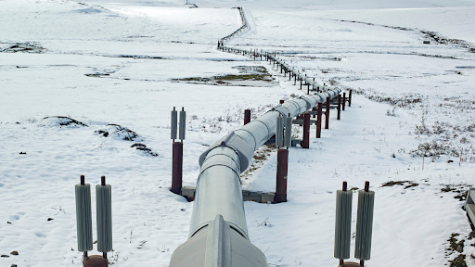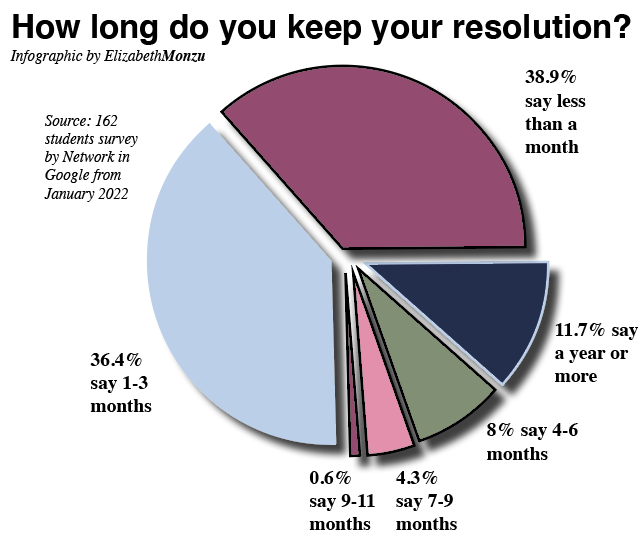The Willow Project Controversy
April 7, 2023
 What would you sacrifice for 600 million barrels of oil? For the Biden administration, the answer is clear: the environment and the well-being of Native American communities. The Willow Project was recently approved by the Biden administration on March 13, 2023, despite significant controversy surrounding the decision. The polarizing $8 billion project is led by an Alaskan petroleum refinery company and has the potential to produce over 600 million barrels of crude oil over the next 30 years. While the project would support the oil industry and the continual demand for fossil fuels, Native American groups and environmental activists have opposed the undertaking (Friedman). The project poses risks to traditional ways of life enjoyed by indigenous communities and their cultural heritage.
What would you sacrifice for 600 million barrels of oil? For the Biden administration, the answer is clear: the environment and the well-being of Native American communities. The Willow Project was recently approved by the Biden administration on March 13, 2023, despite significant controversy surrounding the decision. The polarizing $8 billion project is led by an Alaskan petroleum refinery company and has the potential to produce over 600 million barrels of crude oil over the next 30 years. While the project would support the oil industry and the continual demand for fossil fuels, Native American groups and environmental activists have opposed the undertaking (Friedman). The project poses risks to traditional ways of life enjoyed by indigenous communities and their cultural heritage.
Although Biden is expected to announce restrictions on future offshore oil leasing in Alaska, they are unlikely to offset the impacts of the Willow Project on the environment (The New York Times). Even before the proposal’s approval, the Biden Administration had announced the prevention or restriction of oil drilling on 16 million acres in Alaska and the Arctic Ocean (NPR). These limits include setting aside 2.8 million acres of the Beaufort Sea in the Arctic Ocean to protect the habitat for the whales, seals, and other animals that call it home (The Arctic). The large quantity of oil produced by the contentious project could release up to 280 million metric tons of carbon emissions into the atmosphere, equivalent to the annual emissions of over 60 million passenger vehicles (Bressler). However, supporters of the project argue that it will support Alaska’s economy by creating 2,500 jobs and generating a profit of $17 billion for the federal government (Hernandez).
The Willow Project is the largest oil project currently proposed on federal land (“What is the Willow Project?”). The proposal centers around the company ConocoPhillips (CP), Alaska’s largest oil producer and leader of the oil and gas industry within the state for over 50 years (ConocoPhillips). Through the Willow Project, the company will build an immense oil and gas operation in the Natural Petroleum Reserve in Alaska, located in the western Arctic (WWF Arctic). Hundreds of miles of pipelines, five drilling sites, a gravel mine, 250 oil wells, and an airstrip would be built (“What is the Willow Project?”). The only factor inhibiting the company from expanding and continuing to lead the natural gas and oil industry in Alaska is the warming of the planet: specifically, the melting of the permafrost. To circumvent this obstacle, CP has proposed to include the installation of artificial “chillers” in the ground beneath the drill site. The idea is that these chillers would keep the permafrost frozen and allow the continued fracking of millions of barrels of oil (Evergreen Action).
However, there is a problem in CP’s reasoning: the permafrost is already melting due to climate change. Permafrost is a permanently frozen layer below the Earth’s surface, consisting of soil, gravel, and sand bound together by ice that remains frozen for at least two years. For decades, it has been an indicator used by scientists to evaluate the extent of climate change. This frozen layer is essential to maintaining the integrity of the planet. In fact, melting permafrost can raise ocean water levels and worsen erosion – a process where soil and sediment are easily washed away without ice binding them (National Geographic). This means that re-freezing the melting permafrost to continue drilling for oil will cause more climate change, accelerating the permafrost’s thawing (“What is the Willow Project?”). Thus ensues a deadly cycle.
Needless to say, the thawing of the permafrost does not bode well for humanity, and the Willow Project will only make it worse. The Arctic is warming at a rate four times faster than the rest of the world. The Willow Project would accelerate the process. If CP is permitted to frack at Willow, it could pump about 287 million metric tons of climate pollution into the atmosphere: the equivalent of the annual emissions from 76 coal-fired power plants (“What is the Willow Project?”). The substantial construction also threatens the natural patterns of migratory birds, caribou, whales, and other wildlife in the region (WWF Arctic). Significant greenhouse gas emissions will also be produced during this process, polluting the environment and the stunning landscape. Although the state’s indigenous community actively opposes the project, its first Alaska Native Congressperson, Mary Peltola, supports it (Ruskin). In fact, the state’s House of Representatives voted unanimously in favor of the divisive project (Brooks & Beacon). However, prominent environmental groups like the Center for American Progress and Earthjustice have called for Biden’s Administration to limit or cancel the project altogether. Over 4 million people have already signed a petition opposing the Willow Project on Change.org and the irreversible damage it will cause – check it out here.
The approval of the $8 billion project has ignited strong responses from both opponents and supporters. The project has received criticism for the potential harm to the environment and native species, but supporters assert that it will boost the economy by creating thousands of new jobs. Although the limits on arctic drilling have been recognized as a step in the right direction, others argue that it does not do enough to protect the environment from harm. Since the project’s approval, many groups have already begun to challenge it in the court system. Trustees for Alaska filed a lawsuit against the Bureau and Land Management on behalf of six advocacy groups and social media campaigns to prevent the project have taken over Instagram and TikTok (Symmes). However, the project has faced legal challenges since it was conceived in 1999 during the Clinton administration (ConocoPhillips). It took nearly two decades for the company to acquire the land necessary to collect the oil and prepare for the large-scale endeavor it has become today.
The Willow Project marks a new era for the Biden Administration. Rather than remaining firm in their positions, the Administration is leaning towards traditionally Republican policies. Not only is this an abandonment of key positions the Administration campaigned for, but it also neglects a fundamental scientific truth: burning non-renewable resources damages the environment. It is up to us as Americans to hold the government accountable and ensure the longevity of our planet. The Biden Administration should listen to its constituents’ concerns rather than prioritize business interests and take advantage of the opportunity for profit. The project may seem like a lucrative opportunity in the short term, but the damage will leave a lasting impression on the environment. We must act now to prevent further damage from taking place and prevent economic interests from trumping climate concerns.

































